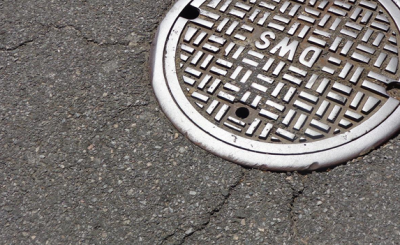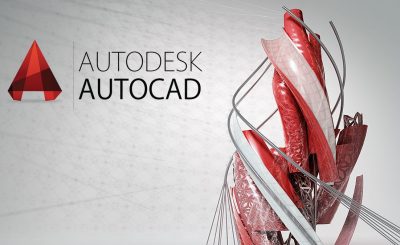Thermography printing is a relatively new technique, yet it offers some improvements over older printing methods. Thermographic printing is more efficient, using less ink and paper while producing more accurate and trustworthy prints. Thermography prints are long-lasting and can withstand heavy foot activity without smudging or fading. With this innovative technology, firms may reduce their printing expenses without sacrificing quality. Businesses that invest in thermography printing will be among the first to benefit from this exciting new technique.
What Benefits Can You Expect From a Contract/Trade Printer?
In comparison to a contract printer, using a trade printer has many advantages. To begin, commercial printers have a far wider variety of capabilities. They might not just print but also bind, and ship your materials to clients. In addition, trade printers can complete jobs faster than contract printers can. Their familiarity with the value of punctuality should give you confidence that your job will be finished on schedule. Finally, trade printers may have lower order minimums than contract printers. It’s cost-free to print fewer papers now. Trade printing businesses offer many benefits that make them the best option when hiring a printer.
How Should One Make the Most of Thermography Printing?
Thermography printing uses heat-sensitive toner to create raised pictures on paper. This is cutting-edge innovation, and it might be incredibly useful to certain enterprises. Thermographic printing can be used to make many different types of printed materials.
With thermography printing, you may make business cards with raised text or images. You can make your business cards stand out from the crowd by using this printing technique that gives them a sophisticated look.
- In addition to being used for business cards, thermography printing can also be utilized to make letterhead with embossed text or images. Letterheads printed with this method may have a more polished appearance and feel.
- Add a dash of sophistication to your correspondence by using envelopes that have been thermographed. Mailings printed using this method have been shown to have a higher rate of being opened and read.
- In order to create brochures with embossed text or graphics, thermography printing can be employed. If your brochures are printed using this process, they may have the appearance of having greater depth and dimension, increasing their potential impact.
- Thermography printing is a wonderful option for making stunning wedding invitations. The use of this printing method has the potential to give your invitations a more sophisticated look and make them stand out from the crowd.
- Thermography printing can also be used to create stunning images for birth announcements, allowing the blind to view their loved ones for the first time.
Organizational Structures
Business owners can choose from a wide range of trade printing firms. While some provide a wider variety of printing services, certain trade printing firms focus exclusively on certain products. When it comes to commercial printing, not all businesses are created equal. Which trade printer you go with depends on your individual requirements and budget. A trade printing company is the best option for professional-grade printing. If money is tight, go with a trade printer that offers affordable prices. Investigate the trade printer’s customer service as well. Review the ratings and comments before making a final choice.
Components Used in Commercial Printing
The four most crucial parts of a commercial printer are the input tray, the output tray, the print engine, and the controller. The controller is like the brain or nervous system of system. It controls everything about printing and transmits data to the print engine. The part of a printer responsible for transferring ink to paper is called the print engine. Ink is transferred from a reservoir to the print surface by a series of rollers, one of numerous moving elements. The paper feeds into the tray and is then transferred to the printing mechanism. Whenever a print job is complete, the printer will eject the paper and deposit it in the output tray. You may utilize or disable extra features on some workplace printers, like a hole puncher or a stapler. A commercial printer, however, is fundamentally just a piece of straightforward machinery that can crank out impressive documents in record time.
Give Some Specifics About That Commercial Printer
Industrial printers have a wide range of clients they cater to. There is a wide range in the size and scope of commercial printers, from little desktop models to large industrial printing presses. However, all commercial printers share a few essential components. Included on this list are things like the print head, ink supply system, and paper feeding mechanism. The part of a printer known as the “print head” is responsible for depositing ink onto paper or other media. A printer’s “media feeding mechanism” refers to the apparatus used to load paper or other media into the device. The print head receives ink from the ink delivery system. All commercial printers rely on these three things. A commercial printer is a piece of machinery that can print both text and graphics on different types and sizes of paper.
Thermography Printer Working Principles
A commercial printer can print on a variety of media, including thicker paper and card stock. Commercial printers can be found in a wide variety of forms, each optimized for a particular task. Thermography printers are one type of industrial printing machine. This printer uses heat to create three-dimensional effects in the printed image. Before the images are created, a powdered component is put into the paper. Keeping the powder in the intended print location. The paper is then heated and put through a circulation process. The powder melts in response to the heat, revealing the image. The image is set once the paper has cooled down. Those that need their business cards, invitations, and other printed materials to seem expert often turn to thermography printers.
How Commercial Printing Has Changed Over Time
It’s safe to say that commercial printing has been around for a long time. True, commercial printing has been around since the 15th century, when Johannes Gutenberg created the first printing press. The printing industry has been creating books, newspapers, and other printed materials for hundreds of years. However, new printing methods like lithography and rotary printing emerged around the start of the nineteenth century. By the turn of the last century, commercial printing had successfully adopted these cutting-edge methods.
Printing for commercial purposes is still vital in the modern economy. Among the many things that commercial printers produce are our marketing materials and packaging for a wide range of products. Thanks to advancements in digital printing technology, commercial printers are now able to produce prints of unprecedented quality at historically low prices. Whether you need business cards or billboard advertisements, a commercial printer can help. Visit www.teamconceptprinting.com to find out more.







